Got knee pain? You're not alone, and you're probably wondering, Should you use heat or ice?
The short answer is, it depends on what’s going on with your knee. Is it swollen and sore after a workout? Or aching from an old injury flaring up? Knowing when to reach for heat or cold can make a big difference. It can help with pain, swelling, stiffness, and even speed up recovery.
Knee pain is more common than ever. Studies like NHANES and the Framingham Osteoarthritis Study show that over the past 20 years, rates of knee pain have doubled in women and tripled in men. That’s a lot of sore knees.
The good news is, you’ve got options. In this guide, we’ll break down when to use heat, when to go for cold, and how to get relief that actually works.
Key Takeaways
-
Knee pain can be caused by injuries, arthritis, and overactivity, with symptoms varying from pain and stiffness to swelling.
-
Cold therapy is effective for reducing inflammation and pain in acute injuries, whereas heat therapy is beneficial for chronic pain and improving blood flow.
-
Contrast therapy, which alternates heat and cold applications, can enhance recovery and alleviate pain, particularly for chronic conditions like arthritis.
Understanding Knee Pain
Knee pain is a common issue affecting people of all ages and activity levels. It can result from injuries, arthritis, or overuse, and is often triggered by repetitive motion, excess weight, or underlying joint conditions. The knees absorb significant daily impact, making them vulnerable to joint pain, muscle spasms, joint stiffness, and cartilage tears.
Common Causes
Osteoarthritis is one of the leading causes of chronic knee pain. As Dr. Antonia F. Chen, chair and professor of orthopedic surgery at the University of Texas Southwestern Medical Center, explains:
“Osteoarthritis is wear and tear of cartilage, or the covering at the end of bones, which leads to pain, stiffness and decreased joint function… It is incredibly common — sources have estimated that 80% of adults greater than 55 years old have some arthritis, and 500 million people are affected by osteoarthritis worldwide.” Source
In fact, studies from NHANES and the Framingham Osteoarthritis Study show that the age- and BMI-adjusted prevalence of knee pain and symptomatic osteoarthritis has doubled in women and tripled in men over 20 years.
Other causes of knee injury include meniscus and cartilage tears, sprains, and tendonitis. These often result from direct impact or repetitive movement during activities like running or biking. Tendonitis, in particular, develops gradually and can become chronic without proper treatment.
Symptoms
Common arthritis symptoms include knee stiffness, swelling, and persistent joint pain that worsens with activity. This is especially true in older adults and those with a history of knee injury. Overweight individuals are also at greater risk.
Tendonitis often causes tight muscles and discomfort that initially appear during activity but may eventually become constant. These symptoms may also stem from muscle tension, poor circulation, or poor recovery habits.
To manage pain, it's essential to recognize whether you're dealing with an acute or chronic pain issue.
For example, knowing whether heat or cold is better for knee pain is vital. Using an ice pack right after injury helps reduce swelling and numb pain, while heat therapy is more effective for relieving pain from long-term knee stiffness and increasing blood flow.
Cold Therapy for Knee Pain
Cold therapy is a proven method to manage knee pain, especially after injury. It works by constricting blood vessels, reducing inflammation and swelling, and providing fast pain relief. Applying an ice pack promptly can ease discomfort and support early-stage recovery.
Benefits of Ice Therapy
Using ice reduces blood flow to the injured area, helping reduce inflammation and swelling. It also numbs the nerves, offering short-term pain relief. Ice therapy is beneficial within the first 48 to 72 hours after a strain, sprain, or minor tear, and during arthritic flare-ups.
A study in The American Journal of Sports Medicine found that ice application cut swelling by nearly 50% when used shortly after injury. It’s also effective post-workout to calm sore muscles.
When to Use Ice
Ice is most effective during the first 48 hours following an acute knee injury. It’s ideal when you experience:
-
Noticeable swelling or inflammation
-
Soreness after intense physical activity
-
Flare-ups from arthritis or tendon overuse
Cold therapy helps reduce inflammation and numb pain during this early phase. However, avoid using ice if you have Raynaud's syndrome, poor circulation, or cold sensitivity. If swelling worsens or pain persists, it’s important to consult a healthcare professional.
How to Apply Ice
To get the most benefit from ice therapy without harming your skin, follow these steps:
-
Always wrap your ice pack in a towel or cloth to create a protective barrier
-
Apply the pack for 10 to 20 minutes at a time
-
Allow at least one hour between applications
-
Never place ice directly on the skin to avoid frostbite or irritation
You can use a commercial gel ice pack, crushed ice in a towel, or even a sealable bag of frozen vegetables. Discontinue use if your skin becomes red, numb, or irritated.
For additional support while recovering, pairing cold therapy with the Anaconda Knee Brace can help stabilize the joint and reduce unnecessary strain, especially during movement.
Heat Therapy for Knee Pain
While ice is great for acute injuries, heat therapy shines when dealing with chronic discomfort or stiffness. Applying heat increases blood flow to the affected joints, helping the body relax tight tissues and restore mobility. For many people with arthritis or lingering knee issues, heat offers lasting pain relief and can be an essential part of their daily care routine.
Let’s take a closer look at how and when to use heat effectively.
Benefits of Heat Therapy
Applying heat dilates your blood vessels, improving circulation and delivering oxygen and nutrients to the affected area. This process helps reduce muscle spasms, soothe sore joints, and relieve pain.
In a study published in the Archives of Physical Medicine and Rehabilitation, patients with knee osteoarthritis who used moist heat therapy experienced a 25-30% reduction in stiffness and disability. Another clinical trial found that heat applications led to significant improvements in pain levels and joint function within just two weeks.
When to Use Heat
Chronic knee pain, especially conditions lasting more than 6 weeks, can benefit from heat therapy. Avoid applying heat until swelling has subsided after an injury. Conditions like arthritis, which cause tight muscles or require long-term pain management, greatly benefit from heat therapy.
Make sure there is no swelling before using heat therapy.
How to Apply Heat
Follow these tips for safe and effective use:
-
Always place a towel between the heat source and your skin to prevent burns
-
Use a heating pad or warm compress for 15 to 30 minutes at a time.
-
The temperature should feel comfortable, not hot enough to irritate.
-
Never apply heat to broken skin or while sleeping.
-
Test the temperature before placing it on your body
Moist heat is especially beneficial. You can use a microwavable heating pad, a damp towel, or even a sealable bag filled with warm rice. Avoid direct contact with the skin to reduce risk.
If you notice redness, irritation, or increasing discomfort during use, remove the heat source and monitor your symptoms. Seek medical attention if symptoms worsen or persist.
Contrast Therapy for Knee Pain
If you're dealing with lingering knee pain from overuse or chronic conditions like arthritis, contrast therapy could offer meaningful relief. This method alternates between cold and heat applications, helping your body recover faster by addressing both inflammation and stiffness.
What is Contrast Therapy?
Contrast therapy involves alternating cold and heat exposure on the affected area. This can be done using ice packs and heating pads or by submerging the knee in cold and warm water. The process helps stimulate blood circulation, reduce swelling, and ease muscle tension.
Athletes and physical therapists often use contrast therapy during recovery from overuse injuries, especially when inflammation has begun to subside but stiffness and tightness persist.
Benefits of Contrast Therapy
Contrast therapy offers a range of scientifically backed benefits, especially when used for subacute injuries (those not brand new but not fully chronic) or persistent joint pain.
Here are some key advantages:
1. Improves Circulation and Healing
Switching between cold and heat causes blood vessels to constrict and dilate, creating a “pumping” effect. This helps remove waste products like lactic acid while delivering oxygen and nutrients to tissues more efficiently.
A study in the Journal of Strength and Conditioning Research found that contrast water therapy significantly improved recovery markers such as muscle soreness and fatigue in athletes within 24 hours after training.
2. Reduces Muscle Fatigue and Soreness
Alternating cold and heat has been shown to reduce delayed-onset muscle soreness (DOMS), which is common after high-intensity or unfamiliar activities.
Research published in Physiotherapy Research International showed that contrast therapy reduced perceived muscle soreness by more than 20 percent compared with passive recovery alone.
3. Eases Joint Stiffness and Pain
Contrast therapy is beneficial for people with arthritis or joint stiffness. The cold component helps manage lingering inflammation while the heat relieves stiffness by improving the range of motion and relaxing surrounding muscles.
A clinical review in The International Journal of Hyperthermia found that contrast therapy improved joint mobility and flexibility in patients with osteoarthritis when used regularly for 4 weeks.
How to Perform Contrast Therapy
You can use contrast therapy at home with just two simple tools: an ice pack and a heating pad, or two water containers (one cold and one warm).
Here’s a basic approach:
-
Apply ice to the knee for 10 minutes
-
Wait 1 hour
-
Apply heat for 10 to 15 minutes
-
Repeat as needed throughout the day
Tips for safe use:
-
Always use a towel or cloth barrier to avoid direct contact with skin
-
Never use extreme temperatures
-
Avoid contrast therapy on open wounds or areas with poor circulation
-
If you have a condition like Raynaud’s syndrome, consult your doctor first
Timing Guidelines for Ice and Heat Therapy
Timing is crucial when applying ice and heat therapy. Icing is most beneficial immediately after an acute knee injury and should continue for at least 72 hours or until swelling subsides.
Apply heat therapy only after initial swelling has diminished to avoid further aggravation. Alternating between heat and cold typically involves 3-5-minute intervals per session.
Pre-Activity vs Post-Activity
Applying heat before activities can help alleviate stiffness and improve joint mobility in the body. Heat helps by applying heat before physical activity, reducing joint stiffness, improving flexibility, and enhancing the range of motion to relax tight muscles while exercising.
Post-activity application of ice is effective in controlling inflammation and pain. During the acute phases of knee injuries, cold therapy helps manage inflammation.
Acute vs Chronic Pain
Ice therapy is commonly recommended for acute injuries, particularly during the initial 48-72 hours after the onset of pain. It reduces inflammation and swelling and numbs pain by constricting blood vessels.
Heat therapy benefits chronic conditions by increasing blood flow and relaxing tight muscles. Hot baths are particularly effective for alleviating symptoms of chronic conditions like arthritis.
When Not to Use Ice or Heat
While ice and heat therapy can offer significant pain relief for many types of knee pain, there are specific situations where using them may do more harm than good. Knowing when not to apply these therapies is just as important as knowing when they help.
When to Avoid Ice Therapy
Cold therapy is generally helpful in the early stages of an injury, but it’s not always appropriate for every situation or every person.
Avoid ice in the following scenarios:
-
Raynaud’s syndrome: This condition causes extreme sensitivity to cold. Using an ice pack may trigger dangerous constriction of blood vessels, leading to increased pain or even skin damage.
-
Poor circulation or nerve damage: If you have conditions that reduce blood flow or sensation, such as diabetes, applying cold may delay healing or mask worsening symptoms.
-
Open wounds or active bleeding: Applying ice directly to broken skin can slow clotting and increase the risk of infection. Cold water or a sealable bag of frozen vegetables should also be avoided on open injuries.
-
Severe swelling or deep tissue injury: In some cases, ice can delay proper healing if overused, especially without breaks. Always use a towel or cloth as a barrier to prevent skin damage.
If your skin becomes red, numb, or painful while icing, stop immediately and consult a healthcare professional.
When to Avoid Heat Therapy
Although heat therapy can help relax tight muscles, improve range of motion, and reduce stiffness, it can be counterproductive in some instances.
Do not use heat if:
-
Swelling is still present: Applying a hot compress or heating pad to a freshly injured or swollen area may increase inflammation, delay healing, and worsen pain.
-
You have a recent acute injury: Sprains, strains, or trauma that occurred within the last 48–72 hours should not be treated with heat. Use ice during this window to reduce swelling and inflammation.
-
You have reduced sensation in the injured area: Conditions like neuropathy or spinal injury may prevent you from feeling if a heat source is too hot, putting you at risk for burns.
-
The skin is broken or irritated: Applying heat to compromised skin can worsen irritation or lead to infection.
Avoid direct contact with heating elements. Whether using hot baths, moist heat wraps, or an electric heating pad, always test the temperature first and use a barrier to prevent burns.
When in Doubt, Ask a Professional
If you're unsure whether ice or heat is appropriate for your condition, speak with a healthcare professional or doctor, especially if:
-
Pain increases despite self-care.
-
Swelling persists after several days.
-
You have a chronic condition, such as arthritis, and are unsure which approach would help more.
-
Symptoms interfere with physical activity or daily movement.
In these cases, a tailored plan that includes therapeutic movement, targeted exercise, and supervised use of heat or cold may offer the safest and most effective path to recovery.
Final Thoughts
Effectively managing knee pain begins with knowing when to apply the right kind of therapy. Cold therapy is ideal in the early stages of an injury to reduce swelling and ease discomfort.
Heat therapy, on the other hand, works best for chronic pain, helping to increase blood flow, relax tight muscles, and improve mobility before physical activity. For ongoing or mixed symptoms, contrast therapy, alternating heat and cold, can enhance recovery and provide more profound relief.
Always consider your specific symptoms and any underlying health conditions. When in doubt, consult a healthcare professional to ensure you’re using these methods safely and effectively.
And suppose you're looking for added support during recovery or daily movement. In that case, the Anaconda Knee Brace can complement your routine by stabilizing the knee and reducing strain, especially when paired with heat or cold therapy.
Your knees do a lot for you. With the proper care, they’ll keep doing so pain-free.
Frequently Asked Questions
Still have questions about managing knee pain with heat or cold therapy? Here are quick answers to help you find the right approach for faster recovery and lasting comfort.
When should I use ice for my knee pain?
You should use ice for your knee pain within 48 hours of an acute injury to effectively reduce swelling and inflammation. Prompt icing can help alleviate discomfort and promote recovery.
Can I use heat immediately after a knee injury?
You should avoid using heat immediately after a knee injury; it is best to apply heat only after the initial swelling has decreased.
How long should I apply ice or heat therapy?
For effective ice therapy, apply ice for 10-20 minutes with breaks in between, while heat can be applied for 15-30 minutes. Always ensure the temperatures remain comfortable to avoid injury.
What is contrast therapy?
Contrast therapy is an effective method that alternates between hot and cold treatments to alleviate pain and enhance recovery. This approach can be particularly beneficial for managing injuries and improving overall circulation.
Are there any conditions where ice or heat therapy should be avoided?
Ice therapy should be avoided for conditions like Raynaud's disease and open wounds, while heat therapy should not be used during acute inflammation.


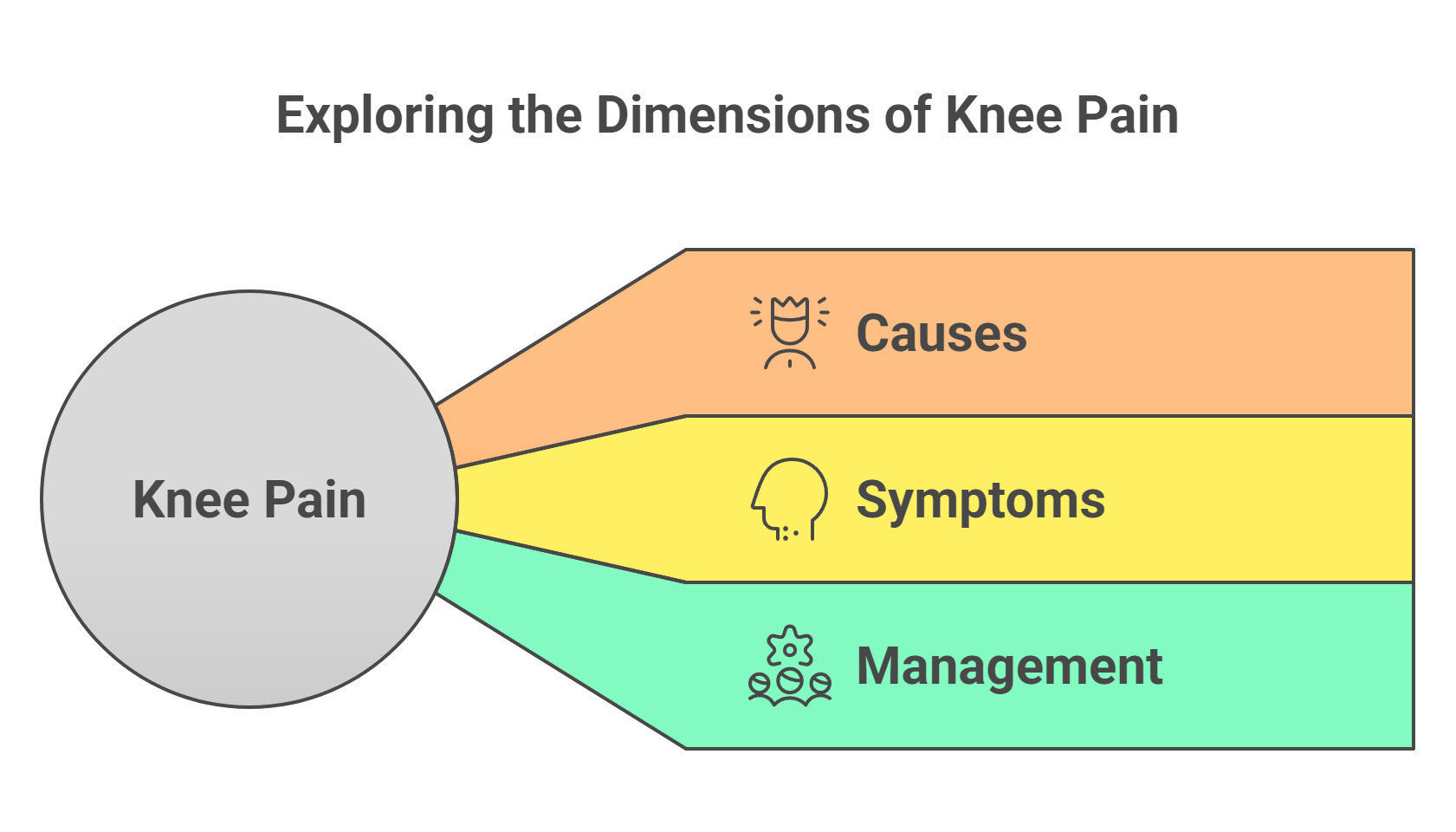

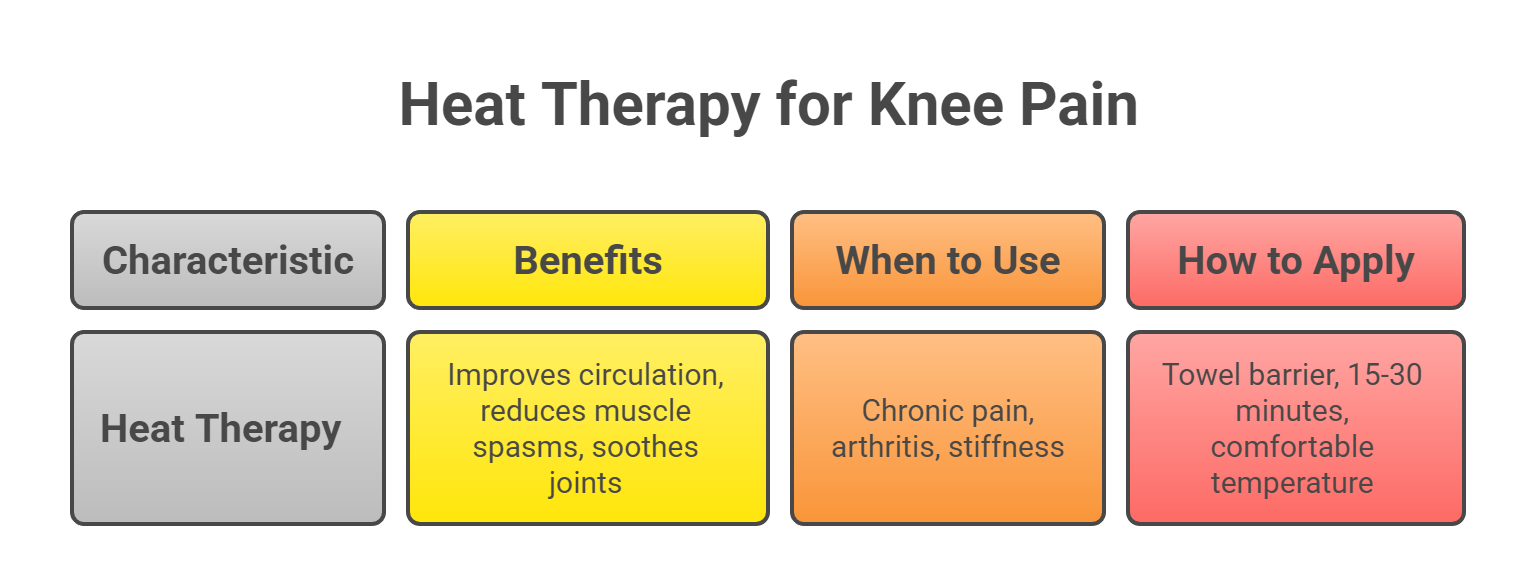

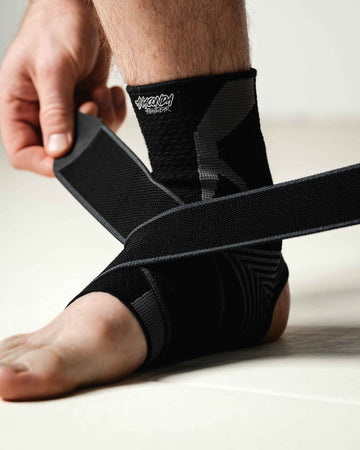



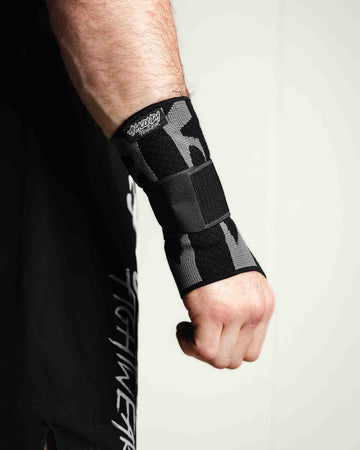

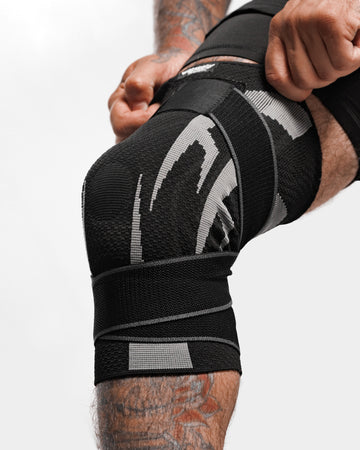



![How Long Does a Knee Injury Take to Heal? [Essential Insights and Tips]](http://anacondafightwear.co/cdn/shop/articles/How_Long_Does_a_Knee_Injury_Take_to_Heal.jpg?v=1764885786&width=533)
